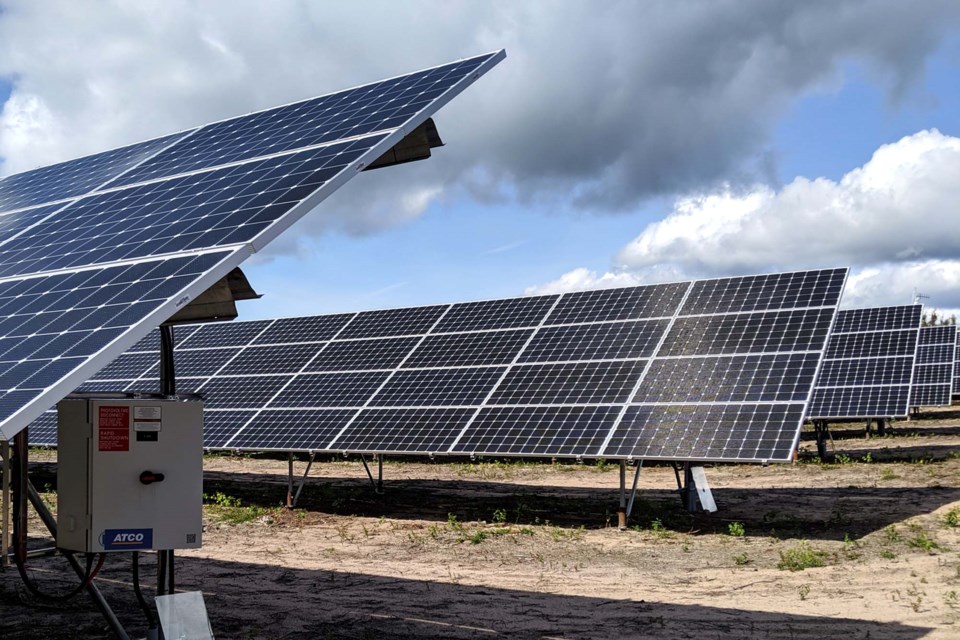St. Albert council is studying plans to build a massive solar farm on the north side of town – one that could earn the city some $29 million.
City council voted unanimously Aug. 17 to put $200,000 of its stabilization reserve toward a detailed study and design of a 15-acre solar farm on the Badger Lands, which is the 80-acre site owned by the city north of Villeneuve Road.
Council first heard about this project from city utilities and environment director Kate Polkovsky in July.
Polkovsky proposed that the city build a $33-million, 15-megawatt solar photovoltaic array over 15 years on the northern 15 acres of the Badger Lands. She picked those lands because they were contaminated with salt (meaning they would need extensive cleanup before they could be sold) and close to an electrical substation.
By selling power from the array to the provincial grid, Polkovsky estimated the city would make more than enough money to cover the cost of the array’s loan payments, resulting in a net $29-million profit after 25 years. This estimate did not consider the effect of grants or extra cash the city could make by selling green power to a third party.
Council heard the farm would cost about $30,000 a year to run, most of which was for grass cutting and snow plowing. Power from the farm would offset some 3,500 tonnes of carbon a year – equivalent to what you’d release by burning about 30,000 barrels of oil, the U.S. EPA reports.
Polkovsky told council the financial models she used to evaluate the solar farm likely underestimated its effects, as they did not reflect recent technological advances. Other communities have found that their solar arrays have exceeded expectations: Banff’s solar arrays will pay for themselves in 10 years instead of 25 as projected, for example, while the City of Leduc is saving about $160,000 a year on power with its panels instead of $56,000.
Polkovsky said the detailed study would confirm the solar farm’s feasibility, profitability, power output and costs.
Council agreed to dedicate the back third of the Badger Lands to the development of a solar industry in St. Albert, and voted 5-2 (councillors Jacquie Hansen and Natalie Joly opposed) to have administration report on all previous plans for the Badger Lands next year.
Council voted 5-2 to draft a borrowing bylaw to fund the solar farm after administration presents a business case for it next year. Councillors Ken MacKay and Sheena Hughes opposed the move, saying it presumed that the detailed study would find the farm to be profitable. Councillors Hansen and Joly disagreed, and said having a borrowing law in the works would show others that the city is serious about this project, boosting our chance of getting grants for it.
Council directed administration to report the results of the solar farm study next spring.




